What is M2 slots? What Devices Can I Install? Complete Guide 2024
Do you want to know What is M2 slots on the Motherboard? In the world of computer hardware, technological advancements are constantly pushing the boundaries of performance and efficiency. One such innovation is the M.2 slot, a compact and versatile interface found on modern motherboards. The M.2 slot has revolutionized the storage and expansion capabilities of computers, providing faster speeds and a smaller form factor. In this article, we will delve into the details of M.2 slots, their benefits, and their various applications.
What is M2 slot on the Motherboard?
An M.2 slot, also known as Next Generation Form Factor (NGFF), is a small expansion slot found on modern motherboards. It was introduced as a replacement for the older mSATA and Mini-PCIe slots, offering significant improvements in terms of size, speed, and versatility. M.2 slots support a range of devices, including Types of Solid State Drives (SSDs), Wi-Fi cards, Bluetooth modules, and more.
Form Factors and Keying
M.2 slots come in different form factors, which refer to their physical dimensions. The most common form factors are 2242, 2260, and 2280, indicating the length and width in millimeters. The number following the form factor denotes the length, while the first two digits represent the width. For example, an M.2 2280 slot is 22mm wide and 80mm long. Additionally, other form factors like 2230 and 22110 are also available, catering to specific device requirements.
| Base Type | Size | Main Feature |
|---|---|---|
| type2280 | 22 x 80 mm / 2.2 x 8 cm | the most common size. |
| type2260 | 22 x 60 mm / 2.2 x 6 cm | used in PCIe x 4 interfaces and drives with higher speed and capacity. |
| type2230 | 22 x 30 mm / 2.2 x 3 cm | typically used for Wi-Fi and Bluetooth connections to laptops and desktops. The interface is SATA or PCIe x2. |
| type2242 | 22 x 42 mm / 2.2 x 4.2 cm | a common format for SSDs used in Mini-PCs and laptops with SATA and PCIe x2 interface. |
| type22110 | 22 x 110 mm / 2.2 x 11 cm | The biggest units are finally here, they are almost always the fastest and most expensive. Used for ATX boards with dimensions of 22 x 110mm where space is not an issue. |
To prevent incompatible devices from being inserted into the wrong slots, M.2 slots use a keying system. Key notches, located on the M.2 devices and slots, ensure correct alignment and prevent insertion of incompatible devices. Common keying configurations include B-key, M-key, and B+M-key. The number of pins in the slot and the type of keying determine the supported functionalities, such as PCIe or SATA interfaces.
Benefits of M.2 Slots
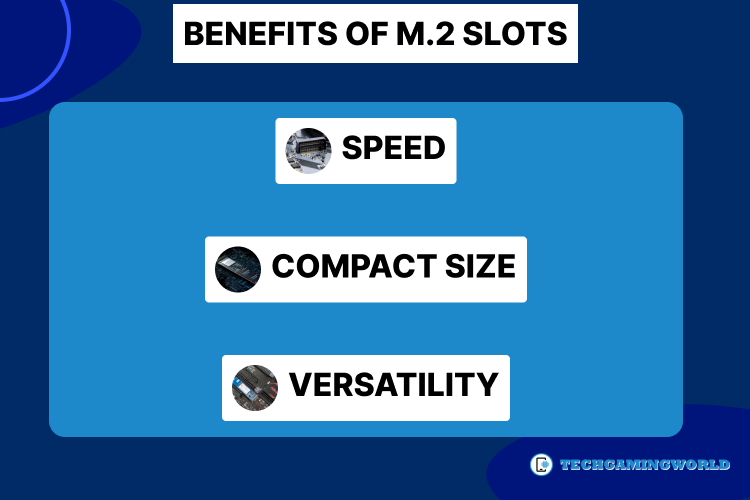
- Speed: M.2 slots support high-speed interfaces like PCIe (Peripheral Component Interconnect Express) and SATA (Serial ATA). This enables faster data transfer rates compared to traditional storage interfaces like SATA III. PCIe-based M.2 slots can provide speeds of up to several gigabytes per second, allowing for quicker boot times, faster application launches, and improved overall system performance.
- Compact Size: M.2 slots have a smaller form factor than their predecessors, making them ideal for compact devices such as ultrabooks and mini-PCs. Their slim design allows for more flexibility in system layouts and provides additional space for other components. The reduced size also contributes to improved airflow and cooling within the system.
- Versatility: M.2 slots are not limited to storage devices alone. They can accommodate a variety of components, including wireless network cards, Bluetooth modules, and even cellular modems. This versatility allows users to customize and upgrade their systems according to their specific needs without sacrificing valuable PCIe or SATA ports.
- Improved Aesthetics: The compact nature of M.2 slots eliminates the need for bulky cables and connectors, resulting in a cleaner and more streamlined internal layout. This not only enhances the overall aesthetics of the system but also simplifies cable management, making it easier to access and upgrade components.
Applications of What is M2 Slots
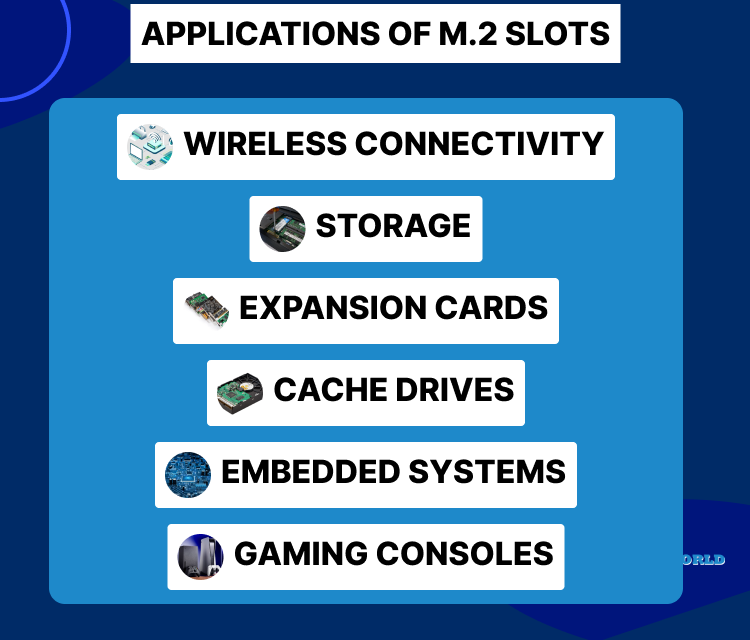
- Storage: One of the primary uses of M.2 slots is for storage devices. M.2 SSDs, available in various capacities, provide faster boot times, reduced loading times, and improved file transfer speeds. They are widely used in gaming systems, content creation workstations, and high-performance laptops.
- Wireless Connectivity: M.2 slots can host wireless network cards and Bluetooth modules, enabling seamless connectivity. Users can upgrade their systems with Wi-Fi 6 (802.11ax) or even Wi-Fi 6E (802.11ax with extended frequency bands) cards, providing faster and more reliable wireless internet connections. Bluetooth modules integrated into M.2 slots allow for easy pairing with peripherals such as wireless keyboards, mice, and headphones.
- Expansion Cards: M.2 slots can also accommodate expansion cards, expanding the capabilities of a system. These include add-on cards such as sound cards, RAID controllers, and Thunderbolt expansion cards. By utilizing the high-speed PCIe interface, these expansion cards enhance audio quality, provide advanced storage configurations, and offer Thunderbolt connectivity for high-speed data transfer and video output.
- Cache Drives: M.2 slots are commonly used for cache drives in storage setups. In combination with traditional hard disk drives (HDDs) or larger capacity SSDs, an M.2 SSD can act as a cache, storing frequently accessed data for faster retrieval. This configuration, often referred to as Intel Smart Response Technology or AMD StoreMI, significantly improves system responsiveness and overall storage performance.
- Embedded Systems: M.2 slots find extensive use in embedded systems such as industrial computers, mini-PCs, and single-board computers. These systems often require compact form factors, reliable storage, and efficient wireless connectivity. what is M2 slots fulfill these requirements, allowing for reliable storage solutions and easy integration of Wi-Fi or cellular connectivity modules.
- Gaming Consoles: M.2 slots have made their way into gaming consoles, providing faster storage options for improved gaming experiences. Consoles equipped with M.2 SSDs benefit from reduced loading times, faster texture streaming, and seamless open-world exploration, enhancing the overall gaming performance and user experience.
Installation and Compatibility
To install an M.2 device, locate the what is M2 slot on your motherboard and gently insert the device at an angle. Ensure that the key notches on the M.2 device align with the keying notches on the slot. Once inserted, apply gentle pressure to secure the device in place. Some M.2 slots come with retention screws or clips to further secure the device.
It’s essential to check the specifications of your motherboard to determine the supported key types (B-key, M-key, or B+M-key) and the supported interface (PCIe or SATA) for each slot. M.2 devices are typically backward compatible, allowing you to use a PCIe-based M.2 SSD in a SATA-based M.2 slot, albeit with reduced performance.
FAQs Of What is M2 Slots
Conclusion
M.2 slots have become an integral part of modern motherboards, offering numerous benefits such as increased speed, compact size, versatility, and improved aesthetics. Whether used for storage, wireless connectivity, expansion cards, cache drives, embedded systems, or gaming consoles, M.2 slots provide a versatile and efficient solution for enhancing system performance and functionality. With their smaller form factor and support for high-speed interfaces, M.2 slots continue to drive innovation in the world of computer hardware, offering users a wide range of possibilities for customization and optimization. So we hope you are now well aware of What is M2 slot on the Motherboard? But if you have questions you can contact us via our comment section.

About Author
I am EDIE MILES, the founder of TechGamingWorld, a blog. in which is an online gaming community dedicated to providing the latest news and reviews about the world of online games, including PC and console games. Read More



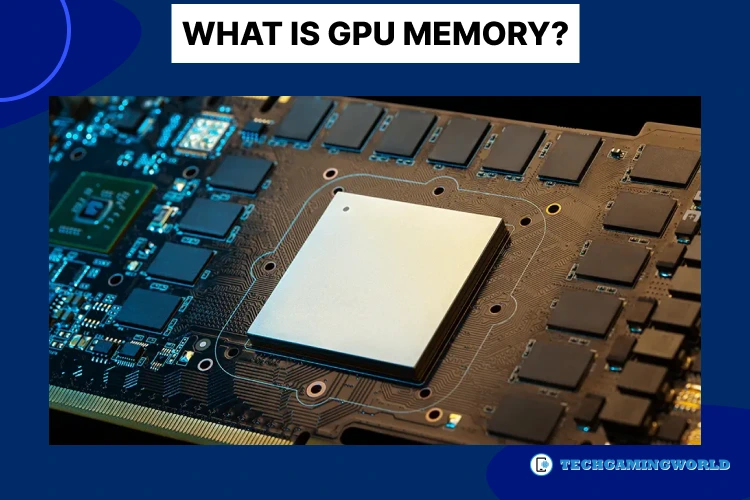
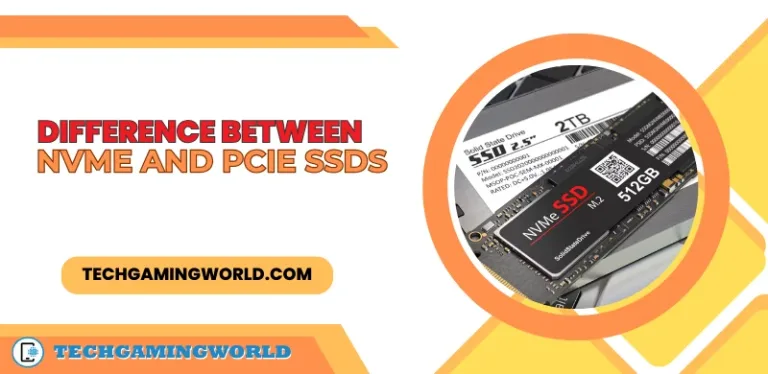

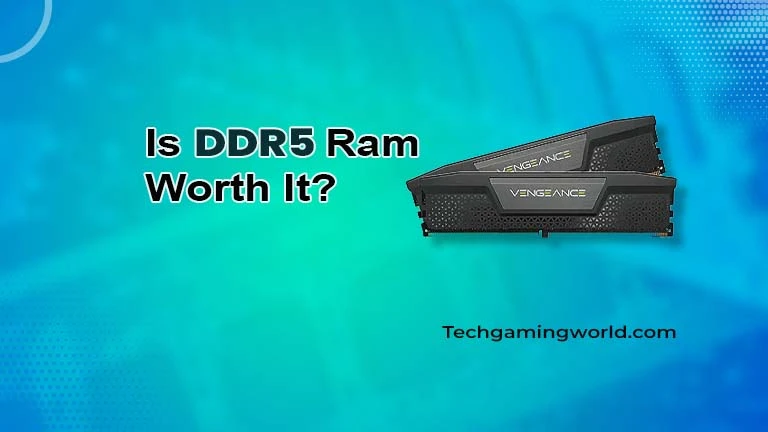
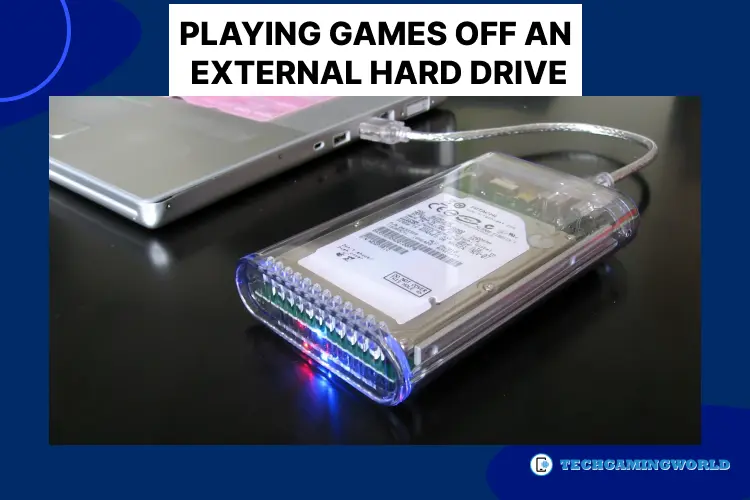
![4 Types of Solid State Drives and Connectors [Connectors Type Explained 2024]](https://techgamingworld.com/wp-content/uploads/2023/07/Types-of-Solid-State-Drives-and-Connectors-1.webp)